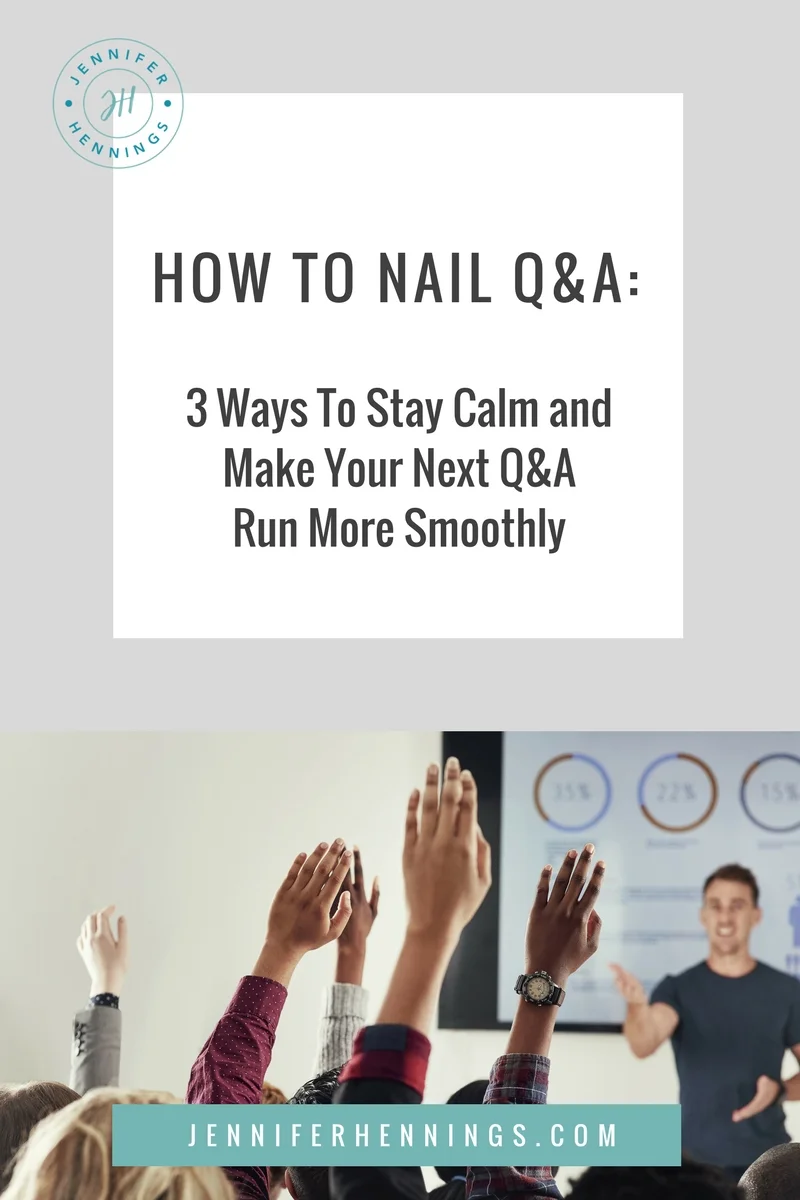As much as presentations can trigger our anxiety, clients often tell me that the scariest part of a presentation actually comes once they finish. Why? Because that’s when they invite the audience to ask questions.
Q+A is nerve-wracking because it’s not entirely within our control. Maybe your boss will ask that tough question about your budget. Maybe your potential client will ask why your company hasn’t released any new products in the past year. And maybe you’ll lose your cool and start rambling instead of getting straight to the point.
The good news, though, is that while you don’t know for sure what questions your audience will ask, there is plenty about Q+A that is still under your control.
Here are three things you can do to make sure your next Q+A goes more smoothly:
1. Answer their questions before they ask.
Chances are, if I asked you to make a list of the questions your audience is most likely to ask at your next presentation, you’d be able to anticipate most or all of their top concerns. You know your CFO always asks about the budget. You know your CEO cares about how this latest release will affect market share. And you know that your biggest client is wondering why you won’t sign an exclusive partnership deal with them.
As you’re preparing your presentation, make a list of the top 10 questions your audience will ask (yes, even the hard ones you’d rather they didn’t). Then structure your presentation as a response to your audience’s questions. By preemptively answering your audience’s toughest questions instead of waiting for them to ask, you boost your credibility and show the audience that you understand their needs and interests.
2. Diffuse the emotional bombs.
Even if you’ve answered most of your audience’s questions in advance, you may still get thrown an angry or hostile question that you weren’t expecting. In this case, your job is to stay calm and diffuse the emotional bomb by distilling the question down to its core issue.
If a grumpy colleague asks, “How the hell did this project get so far behind schedule?!”, you can take a breath, look past his annoyed tone, and realize that his core issue is the project’s timeline. Instead of getting defensive, start your reply by calmly identifying his core issue: “In terms of our timeline, we’ve run into several challenges…”
When you refuse to be sucked into other people’s hostility, you gain the audience’s respect and position yourself as a trustworthy and capable speaker.
3. PREP the tough questions.
Once you’ve diffused the emotional bombs, it’s time to actually answer those difficult questions. While Q+A may feel like an exercise in impromptu speaking, you can actually prepare for it by practicing your answers out loud in advance. The idea here isn’t to memorize and then regurgitate your answers but rather to familiarize yourself with your responses so that during your actual presentation, your answers will be clearer and more concise.
One useful structure for answering questions is PREP, which stands for Point, Reason, Example, Point. For example, if a client asks why they should bank with you instead of one of your competitors, you might say:
Point: Banking with us will help you maximize profits…
Reason: … because we offer a better interest rate and lower fees than any of our competitors.
Example: Last year, seven other companies in your industry switched their accounts to our bank and saved an average of $40,000 per month. We also just upgraded our online platform and mobile app to make international banking easier and cheaper, so that’ll be useful as you expand into Europe and Africa.
Point: Bottom line, we save you time and money, so I think we’ll be a great fit for your company.
The PREP structure is effective because it forces you to articulate your point up front rather than meandering your way to your main idea. It also keeps you on track and helps you answer questions succinctly instead of rambling. While it may feel awkward using PREP at first, keep at it: You will eventually internalize the structure if you use it consistently, and giving great answers will be second nature.
So next time you feel your stomach churning at the thought of Q+A, I hope you’ll put these tools into practice so you can feel more in control. I’ve seen clients who’ve applied these tools go from hating Q+A to actually looking forward to it!
Would you or your team like to master Q+A or take your presentation skills to the next level? I work with individuals and teams. Click below to learn more!



